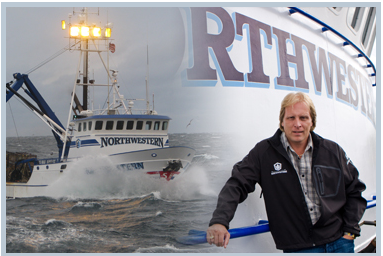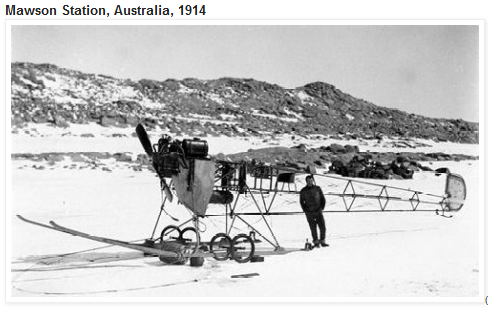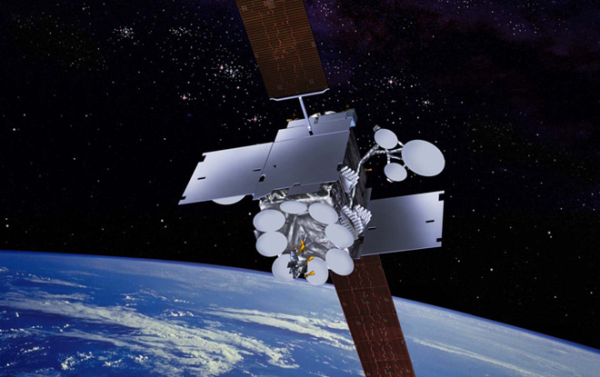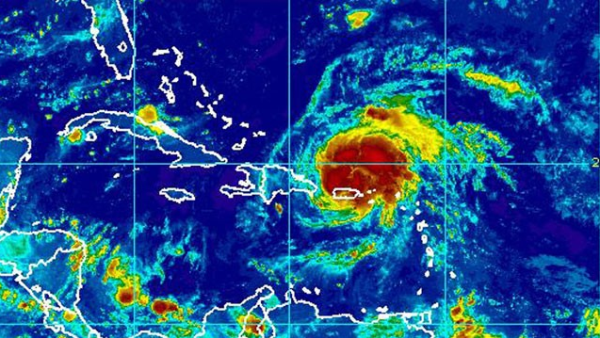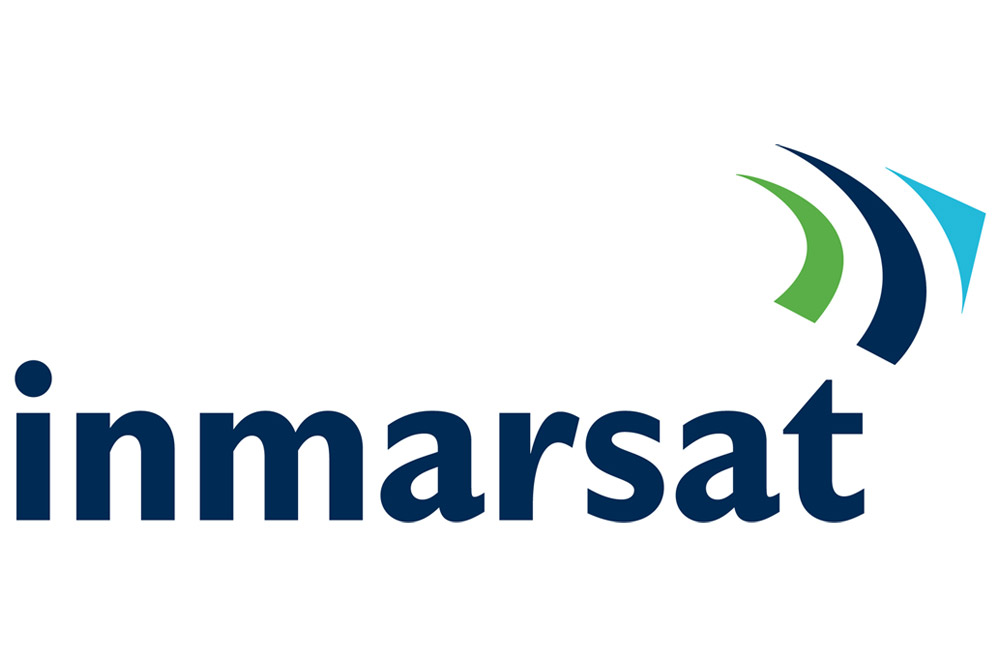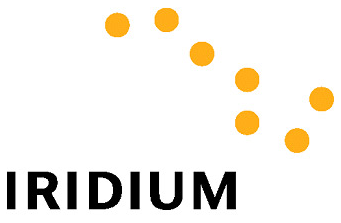Initially, Sig Hansen Captain of the Northwestern was skeptical about using the Fleetbroadband Satellite System. He decided he would put it to the test so they installed the Satellite antenna on the highest point of the Northwestern vessel for two reasons. One, to get the best signal possible, and two, to test it’s durablility against the vibration of the moving vessel. According to Sig, the Fleetbroadband passed the test with flying colors under the duress of heavy seas moving at 10 knots. See the video below.
LightSquared to plan Next Generation Push-to-Talk for Public Safety
LightSquared™, the nation’s first wholesale-only integrated 4G-LTE wireless broadband and satellite network, announced today a plan to ensure the nation’s public safety community continues to have satellite Push-to-Talk and other critical communications features that it has come to depend on as LightSquared moves to next generation satellite services.
LightSquared’s satellite network has played a critical role in federal, state and local public safety communications in emergencies dating back to 1996, including Hurricane Katrina and the recent series of devastating tornadoes that swept through Joplin, Missouri. LightSquared’s next generation satellite service will continue to ensure seamless communications among multiple law enforcement and public safety agencies at the federal, state and local levels. These agencies have come to depend on the reliable interoperable communications capabilities that LightSquared provides.
As part of this plan, LightSquared will:
- Replace the current LightSquared public safety devices at no cost and continue tosupport older devices through 2014.
- Work with the public safety community to design next generation LightSquared devices that meet the rugged standards demanded by public safety workers who work in a wide range of hostile conditions and environments.
- Continue to support the Satellite Mutual Aid Radio Talkgroup (SMART) program on which public safety agencies nationwide rely to communicate.
“For police, fire and rescue, satellite communications is a critical backstop when traditional networks go down or become overloaded by demand during natural disasters and other emergencies. Public safety depends on satellite communications when other networks fail, and LightSquared’s investment in Push-to-Talk will literally help save lives in coming years,’’ said
Bob Spieldenner, director of public affairs, Virginia Department of Emergency Management.
LightSquared’s next generation mobile satellite communications service will continue to have full interoperability with multiple public safety networks around the nation, a critical tool in national and local emergencies. Ubiquitous interoperable communications has been a goal of the public safety community for many years and was highlighted immediately after the 2001 terror attacks when first responders were hindered in their ability to coordinate with each other because they used incompatible communications systems.
“In an emergency, the last thing public safety workers should have to worry about is their ability to communicate with each other. That’s why LightSquared is committed to the SMART program, ensuring that the men and women on the front lines have communication devices that connect them to each other or to a federal agency thousands of miles away,’’ said Sanjiv Ahuja, chairman and chief executive officer of LightSquared. In addition, LightSquared has formed its own Emergency Rapid Response Team that is prepared to travel to troubled areas to assist first responders at the local, state and federal level with interoperable satellite communications.
Article original source here
How to use the iSatPhone
Follow these steps when you receive your iSatPhone Pro
 Once you receive the phone, to activate the sim, please call ISS @ 888-511-3403 or email support at [email protected]. For security purposes, we don’t activate the sim card until it arrives safely to the customer. We take the liberty of installing your sim card for you so it’s already in the phone. ISS will send you your phone number the moment the sim card has been activated. We advise you to charge your phone’s battery prior to using. It is also a good idea to read the quick start guide that is included in the box with the phone.
Once you receive the phone, to activate the sim, please call ISS @ 888-511-3403 or email support at [email protected]. For security purposes, we don’t activate the sim card until it arrives safely to the customer. We take the liberty of installing your sim card for you so it’s already in the phone. ISS will send you your phone number the moment the sim card has been activated. We advise you to charge your phone’s battery prior to using. It is also a good idea to read the quick start guide that is included in the box with the phone.
To register with the Inmarsat network:
Turn the phone on and extend the antenna toward the position of the nearest satellite. Stand in an open area free from obstructions such as buildings, trees or mountains blocking the view between you and the satellite.
Searching satellite will appear on the screen. The top left of the screen will display Inmarsat when your phone is connected to the satellite along with two quick audible beeps indicating your phone is connected to the network. The signal bars reveal the signal strength. At least two signal bars are required to make and receive calls.
Before you can make a call, your phone requires a GPS fix so it can be located by the satellite. This should happen automatically, but if a new GPS fix is needed, the GPS icon will be displayed. Keep the phone in the open with a clear view of the sky until the icon disappears. Your phone is now ready to make and receive calls. Check out “Obtaining a GPS fix manually” on page 29 of the phones user guide for more information
The more open sky you can see the stronger the signal strength. If open sky makes up about 70% of your view when you look up, then the signal should be strong. At the perimeter of the coverage zone (close to the poles), it may be necessary to point the antenna more directly at the satellite for network registration.
To make a call:
Use the international dialing sequence of 00 or +, followed by the country code, area code (without the two zeros) and telephone number, then press the green key to connect the call.
Voicemail is enabled on your IsatPhone Pro by default. however you need to configure call forwarding ‘if not available’ in order for incoming calls to be forwarded to your voicemail while you are not available. You can find this setting in your IsatPhone Pro’s menu options. Your phone automatically checks for voicemails shortly after it has been turned on and is connected to the network. It will also send you voicemails that arrive while you are connected to the network. If you have a new voicemail, the voicemail icon will appear in the status bar at the top of the main screen and in Info. To listen to the message, hold down the #1 key on the keypad for a few seconds and your phone will automatically connect you to your voicemail. Alternatively, you can dial the short code of 570.
Watch this video Tutorial
Vintage aircraft expedition assisted by BGAN
BGAN via the Inmarsat satellite network has been deployed on a mission to salvage famous geologist Sir Douglas Mawson’s vintage aircraft. The location of the first aircraft was confirmed by Australia’s Antarctic Heritage Expedition. BGAN portable satellite terminal was used to update blogs, send pictures and videos to record this amazing event.
Communications officer Dr David Tingay said the Hughes 9201 BGAN terminal supplied by Inmarsat service provider Satcomms Australia was very easy to use and very fast.
“The instructions supplied with the unit are excellent and the BGAN LaunchPad software is very intuitive,” said David.
GPS function
“While the BGAN unit needed to be pointing towards the Equator, the GPS function and LaunchPad enabled us to determine the correct angle and point the unit precisely.”
A dedicated communications area was set up in the north eastern part of the Sorensen Hut which was utilized by the conversation team members.
“The BGAN terminal gave us the ability to provide a large number of photos and blogs to our expedition website,” he added.
“The reports we received suggested this greatly enhanced the website. This benefit is less easy to quantify but needs to be factored in when evaluating the cost of using BGAN.”
Can someone please tell me what mobile satellite communications is?
Ask any 20 people on the street what they know about the mobile satellite communications business, 10 will say “you mean like Sprint or Verizon?” A few will ask “like Dish Network, you mean satellite TV?” A few more will just give you a blank stare. MAYBE you’ll find 1 person who has heard of Iridium…”oh yes, that handheld satellite phone gadget thing”? Hooray, thank you for not confusing it with the chemical element of atomic number 77.
The mobile satellite communications business really originated back in the late 1970’s when Inmarsat rolled out the first commercially available communications satellite. 20 years later, there were less than 1 million customers worldwide, today, still less than 2 million end users globally. Inmarsat, still the largest of all of the commercially available communications satellite constellations, did just over 250 million dollars in revenue last year…, not very much relative to other industries, especially when you consider the huge investment (billions of dollars) required to launch and maintain these very expensive and complex constellations (satellites)!
Mobile Satellite communications is the “definition” of a niche business. Almost without fail, if there is ANY other alternative available, cell phones, land lines, 2 juice cans and a string, smoke signals, you name it, it will be less expensive than satellite. Combine the “sticker shock” that generally applies to one’s first exposure to satellite communications with the “perceived” complexity of the product and you’ve gone a long way towards explaining the reason for the limited market. We haven’t even mentioned the fact that most people seldom if ever even venture into the realm where there are no landlines or cell phones available and therefore have no reason to ever be exposed to satellite communications.
So why is there even a satellite communications industry, if there aren’t very many customers and they don’t generate that much revenue? Because the people that need it REALLY need it, and they’re willing to pay for it because other options don’t exist. Mobile Satellite communications is always the choice of last resort for anyone who requires communicating in remote parts of the world, but nevertheless, it is a choice. It is the lifeblood of the shipping industry, oil and gas exploration and recovery, emergency and disaster relief operations, aircraft communications and navigation. It plays an absolutely vital role in military operations throughout the world. It isn’t too much of a stretch to say that life as we know it today would be very different if it were not for satellite communications. It touches EVERYONE, whether they realize it or not.
iSatPhone Pro Service and Features
Here’s another great video on the services and features of the NEW iSatPhone Pro via the inmarsat satellite network
Inmarsat signs contract for next generation satellites
Inmarsat, the world’s premier provider or mobile satellite communications, is proud to announce the signing of a contract with International Launch Services (ILS) to launch the new Inmarsat-5 satellite on board ILS’ Proton launch vehicle. The three state-of-the-art 702HP Ka-band spacecraft, currently being built by Boeing, are scheduled to launch from the Baikonur Cosmodrone in Kazakhstan in 2013-2014. The I-5’s will support Inmarsats forthcoming Global Xpress™ network.
Including launch costs, Inmarsat will invest an estimated US$1.2 billion in the Global Xpress program. Global Xpress will offer seamless global coverage and deliver unprecedented mobile broadband speeds of up to 50Mbps, providing Global access to all sectors of the market, including government, maritime, enterprise, energy and aeronautical.
Inmarsats most recent launch, the Inmarsat-4, was successfully carried out by ILS from Baikonur in August 2008. The Proton vehicle is Russia’s premier heavy-lift launcher and is built by Khrunichev State Research and Production Space Center, the majority owner of ILS. The Proton has successfully launched 31 consecutive missions since July 2008, 365 missions since its maiden flight in 1965.
“Selecting a launch services provider is a critical part of realizing our Global Xpress vision,” said Andrew Sukawaty, chairman and CEO of Inmarsat. “Our agreement with ILS shows that we are well on track with our aggressive program for Global Xpress, with service planned to start in 2013. We have partnered with ILS and Khrunichev for previous launches, and look forward to a successful campaign for Inmarsat-5.”
Inmarsat and Lightsquared provide relief for hurricane Irene
Mobile Satellite communications is considered the most effective and reliable platform for communications during emergencies. With Hurricane Irene creating havoc in the east coast of U.S., LightSquared and Inmarsat have joined hands to support the hurricane Irene’s emergency responders.
Wireless communications are the best sought-after communication option during emergency response, rescue, or relief situation. However, terrestrial wireless hardware such as cell phones or land mobile radios are useful and operative only when communications towers and other fixed equipment are in place, which is unlikely during natural calamities.
Satellite communications is the best solution during chaotic situations, because satellites are the only wireless communications infrastructure that are not susceptible to damage from disasters, for the reason that the main repeaters sending and receiving signals (the satellite spacecraft) are located outside the Earth’s atmosphere.
According to a press release, LightSquared and Inmarsat have joined forces to ensure that their respective emergency services customers have reliable access to indispensable satellite communications to support their Hurricane Irene relief efforts.
“Given the tremendous impact Hurricane Irene has had on the east coast of the United States, it is vital that first responders have unfettered access to reliable communications,” said Sanjiv Ahuja, chairman and chief executive officer of LightSquared, in a statement. “LightSquared, working with Inmarsat (News – Alert), is committed to ensuring that those on the front lines of this national emergency have seamless connectivity with one another.”
“During emergencies such as Hurricane Irene, reliable satellite communications is essential for emergency responders and government agencies,” said Andrew Sukawaty, chairman and chief executive officer of Inmarsat, in a press release. “Together with LightSquared we have moved rapidly to ensure that we have sufficient capacity to support emergency management agencies and first responders.”
As the nation’s first integrated 4G-LTE wireless broadband and satellite network, LightSquared has an aim to advance the U.S. wireless industry. Lightsquared deploys an open 4G wireless broadband network to be used by existing as well as new service providers to sell their own devices, applications and services – at a competitive cost.
Inmarsat is a provider of worldwide mobile satellite communications services. They have been offering reliable voice and high-speed data communications to government and it’s agencies, enterprises and other organizations, with a range of services that can be used on land, at sea or in the air, since 1979.
Currently, two kinds of satellite communications networks exist to support emergency response activities: geostationary satellite systems (GEO); and low Earth orbit satellites (LEO). The GEO satellites are located 23,269 miles above the Earth in a fixed position. This coverage provided by both Inmarsat and Lightsquared satellites, cover up to one third of the globe. They are capable of providing a full range of communications services, such as voice, video and high speed broadband data.
French charity deploys mobile satellite communications
Inmarsat, the world’s leading provider of mobile satellite communications, is especially proud to sponsor the work of Télécoms Sans Frontières, the French charity which deploys emergency teams for the purpose of restoring communications in disaster zones. Inmarsat supplies TSF with free satellite communications equipment and financial support which enables the organization to provide telephone, fax, email, internet, data and image transmission any where on the planet regardless of the circumstances.
TSF sets up telecom centers and helps co-ordinate first responders’ relief efforts, enabling survivors to telephone loved-ones to say they’re alive. TSF is excited to announce the recent signing of a ground-breaking agreement with the United Nations establishing the charity as the UN’s principal communications provider in disaster situations.
In 2007, Inmarsat’s support for TSF was recognised with a top award for corporate social responsibility at the annual the Gulf Marketing Review Effectiveness in Marketing Awards, held in Dubai. The award focused on their support for the charity’s mission during the conflict inLebanon in 2006, in which more than 1,000 Lebanese and 160 Israelis were killed and an estimated 1 million people had to flee their homes.
Supported by Inmarsat’s equipment and technical expertise, TSF teams set up telecoms centers that enabled more than 600 Lebanese families to make contact with their loved-ones. These centers also helped co-ordinate communications for some 22 relief organisations working in the region.
Other missions where TSF and Inmarsat contributed to saving lives include:
February 2008 – Mozambique floods
Flooding in the Zambezi River basin saw an estimated 100,000 people flee their homes. In support of UNICEF, TSF was there, setting up two communication centers, co-ordinating relief operations and enabling victims the opportunity to contact loved-ones.
November 2007 – Bangladesh hit by cyclone
TSF supported relief efforts in Bangladesh after Cyclone Sidr hit, affecting 30 of the country’s 64 districts. Countless homes were destroyed, claiming more than 3,000 lives and leaving over 350,000 people without shelter.
September 2007 – Nicaragua hurricane
Hurricane Felix left a trail of destruction that affected an estimated 162,000 Nicaraguans, damaging more than 10,000 homes and leaving 67 people dead and another 110 missing.
September 2007 – Severe flooding in Ghana
Thousands of homes were destroyed by heavy flooding. Large areas of cropland were ruined, leading to the collapse of several major bridges – killing 20 and affecting more than 260,000 people.
August 2007 – Earthquake shakes coastline of Peru
Measuring 7.9 on the Richter scale, an earthquake struck the coastline nearPeru’s capital,Lima, killing more than 500 people and leaving tens of thousands homeless.
May 2007 – Uruguay hit by worst floods in 50 years
A national disaster was declared following the most severe floods in half a century. 12,000 people were forced to flee their homes. Crops and infrastructure were devastated.
April 2007 – Tsunami strikes Solomon Islands
An undersea earthquake measuring 8.1 on the Richter scale triggered a tsunami that pounded the remote Pacific islands in the Solomons. 35 people were killed and some 5,500 were left homeless.
February 2007 – Double blow for Mozambique
Severe flooding left an estimated 90,000 people homeless following a category 4 tropical cyclone. Another 60,000 people were in need of shelter.
May 2006 – Earthquake kills thousands on Java
An earthquake measuring 6.2 on the Richter scale struck theIsland of Java, killing almost 6,000 people and leaving an estimated 1.5 million homeless.
May 2006 – Floods in Surinam
Torrential rains caused several major rivers to flood in southern and central Surinam,South America. 37,000 people were left homeless.
February 2006 – Mudslides in the Philippines
Prolonged heavy rain followed by a minor earthquake caused a series of mudslides in the province of Southern Leyte in the Philippines. Hundreds of people were killed, including almost all the children and staff of a village school.
October 2005 – Earthquake in Pakistan
An earthquake measuring 7.6 on the Richter scale in Pakistan-administered Kashmir killed more than 90,000 people – mostly in remote mountainous areas.
Iridium Force announced for mobile satellite communications industry
Iridium Communications Inc has just announced its vision for the future of mobile satellite communications, Iridium Force™. This vision uses the power of the world’s furthest reaching network to accelerate the development of enhanced personal communication capabilities for people and organizations everywhere. Iridium Force breaks the mold of traditional satellite industry go-to-market strategies by making Iridium technology more accessible and cost-effective for partners to develop a wider range of Iridium-based products and services. This new vision opens the licensing of core Iridium technologies as well as the company’s most fundamental offering – global connectivity.
Five key tenets guide the Iridium Force strategy:
1. Extend beyond satellite phones: Iridium is enabling communications where people need them most, and in more ways than they expect, and connecting to Wi-Fi-enabled devices such as smartphones (BlackBerry®, Android® or Apple iPhone®), tablets and laptops, as well as favorite applications, far beyond the reach of terrestrial networks;
2. Simplify connections: Iridium is investing in making its technology more accessible and cost-effective for partners to embed across an ever-widening range of services;
3. Drive innovation: Iridium is opening and licensing its core technologies and its network so it can collaborate with a broader set of innovators to create new solutions for expanding new markets;
4. Enable location-awareness: Iridium is integrating GPS location-based services for on-the-go location-specific applications and personal security capabilities; and
5. Perform without compromise: Iridium continues its promise to provide tough, dependable, truly mobile devices and services that work reliably everywhere on the surface of the planet.
Iridium pioneered the satellite phone industry more than 10 years ago with the first handheld, commercial satellite phone,‖ said Matt Desch, CEO, Iridium. ―With Iridium Force, we are leading an industry transformation once again by significantly extending the universe of handheld connectivity options. Iridium Force is our strategic vision for rapidly connecting more people in ways never thought possible – even going beyond the limits of our own devices. Iridium Force is more than the launch of a new satellite phone; it signifies our commitment to enable powerful new capabilities including those devices that are already in customers’ hands to work on the Iridium network – today and in the future.‖
New product and service offerings being announced today encompassing Iridium Force include:
Voice and Data Products
Iridium Extreme™ – Iridium Force has inspired the introduction of the most advanced, rugged satellite handset on the market. Iridium Extreme is the smallest and lightest Iridium handset model, with the ability to precisely locate users anywhere on the surface of the planet. It meets stringent U.S. Department of Defense Military Standard 810F for durability and is rich in capabilities, featuring the first dedicated, two-way emergency SOS button on a satellite phone. The phone leads the market in its offering of online tracking portals, with fully integrated GPS and location-based service (LBS) capabilities for web-based location identification and tracking of friends, loved ones or employees. Iridium Extreme delivers reliability, safety and peace of mind everywhere.
Iridium Core 9523 – This voice and data module is the ―brains‖ of the Iridium Extreme satellite phone. The Iridium Core 9523 is a sophisticated and flexible device packaged into a small and cost-effective platform for partners to develop new Iridium-based handheld solutions. Iridium is licensing this core technology to innovators who require the building blocks to develop their own Iridium-based global voice and data communication devices and solutions. A number of our partners are already developing products and services surrounding the Iridium Core 9523.
Location-Based Services (LBS) Data Offerings
Iridium Tracking Portals – Customers can now access location monitoring, messaging and safety tools enabled by the Iridium Extreme satellite phone. More than 17 of our partners are creating customized online tracking portals developed using Iridium’s open software platform. Portal features include tracking an Iridium Extreme user’s real-time status and location, zooming to street level via online maps, scheduling regular check-ins, providing emergency services, ―geo-fencing,‖ and sending free-form, canned and social networking messages.
Wi-Fi Products and Services
Iridium is also introducing new products and services that will allow Wi-Fi-enabled smartphones, tablets and laptops to connect anywhere on the Iridium global network.
Iridium AxcessPoint – Wi-Fi-enabled smartphones, tablets and laptops will be able to connect anywhere through the Iridium network. Iridium AxcessPoint is a portable and lightweight Wi-Fi hotspot accessory that easily connects BlackBerry and Android devices to the Iridium network using an Iridium Extreme or Iridium 9555 satellite phone. iPhone, iPad and iPod Touch devices, and Windows and Mac laptops, will need to download the new, free
Iridium AxcessPoint Mail & Web application. Iridium AxcessPoint is expected to be available in fourth quarter of 2011 with a suggested retail price of less than $200 (USD).

